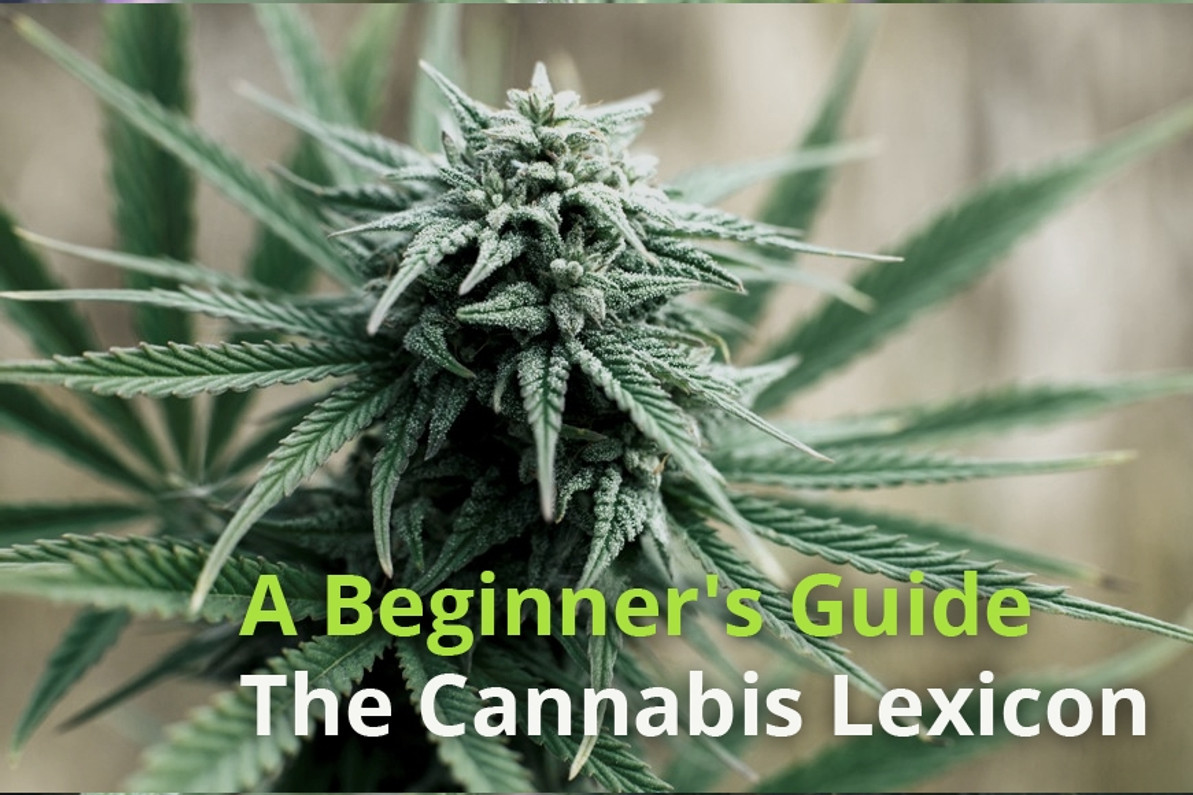A Beginner's Guide: The Cannabis Lexicon
Cannabinoid
The main class of secondary compounds found in cannabis that drive the overall experience. They are creating the experience, both psychoactive and medicinal, so they are primarily responsible for the intoxicating, kind of cerebral high that we all know, and love, from cannabis.
But that’s not all. They are also are responsible for what are said to be cannabis’ many medicinal properties—anti-spasmodic, anti-convulsant, anti-proliferative, cancer-fighting, anti-inflammatory, pain-relieving, and more.While THC and CBD are the two primary cannabinoids, there are more than 100 found in cannabis.
Cannabis/Hemp/Marijuana
Cannabis is the overarching plant; hemp and marijuana are two words we’ve assigned to distinguish a particular cannabis plant’s cannabinoid profile from another. Hemp is a legal subspecies of cannabis that has a measurable concentration of CBD (and less than 0.3 percent THC
The drug cultivar cannabis, or as people say, marijuana, refers to weed that is THC-dominant, that has a high level of THC.
Hemp is accessible nationwide but it is important to make sure your hemp-derived products are being tested for pesticides and potency. If you can’t get in touch with
CBD
Stands for cannabidiol, the second-most prominent compound found in cannabis besides THC. It is a cannabinoid that binds to our endocannabinoid
This is why CBD is thought to have so many medicinal properties and has been linked to physiological properties such as anti-inflammatory, anti-anxiety, anti-depression, pain-relieving, anti-spasmodic, immune-modulation and immune support, anti-convulsant, and anti-proliferative.
Chemotype
This is the actual chemical compound found inside
While much of the industry has relied on terms like
While most dispensaries still label their cannabis flower as
Indica/Sativa
Indica and
While
Ingestion
Unsurprisingly, ingestion is a primary method of consuming cannabis that includes anything you swallow that is digested and metabolized by your
Inhalation
Inhalation is another primary method of consuming cannabis by way of smoking or vaporizing. Smoking involves igniting cannabis, and whenever you do that, there’s a combustion that happens, and only about 12 percent of what you’re inhaling is actually beneficial because you are destroying a lot of the cannabinoids and other beneficial compounds that are in the plant at that point.
On the other hand, vaporizing involves heating cannabis to release its beneficial compounds without creating that harmful combustion.
Intoxicating/Non-Intoxicating
THC is intoxicating, meaning it gives a cerebral high. CBD is non-intoxicating. While product labels don’t typically specify intoxicating or non-intoxicating, if you know the THC/CBS concentration percentages, you will have a good idea of how intoxicating the experience may be.
For example, a product with 70 percent CBD and 30 percent THC may not be as intoxicating as a product with 70 percent THC and 30 percent CBD.
Mucosal
The term ‘mucosal’ covers any product that is absorbed through a mucous membrane. Under-the-tongue tinctures, bath soaks and suppositories are all common mucosal delivery methods. Because it’s being absorbed through the mucous membrane, it’s able to enter the bloodstream more quickly than if it were being digested and processed by your digestive system and metabolized.
Psychoactive/Non-Psychoactive
The dictionary definition of psychoactive is something that affects the mind. Though CBD is often said to be “non-psychoactive,” both it and THC are psychoactive because they bind to receptors in the brain and affect the mind. Typically when people refer to CBD as non-psychoactive, they actually mean non-intoxicating because it doesn’t cause the type of cerebral intoxicating “high” that THC does.
Sublingual
Another way to talk about under-the-tongue delivery.
Terpene
These are the aromatic compounds found in all plants. Terpenes give plants their smells and flavors, and when it comes to cannabis, dictate what type of high you’re going to have. Bottom line, it’s the terpenes that will determine whether you feel relaxed or calm, alert or energized, or somewhere in between.
THC
This is the primary cannabinoid found in cannabis. It is the most abundantly found cannabinoid because people have specifically been breeding for high THC over the last century, thanks to its cerebral psychoactive experience.
However, it also has been linked to many physiological properties, including pain relief and anti-inflammatory properties. For some consumers, it is great for reducing
Topical
This term covers anything you put on the surface of the skin. Think lotions, balms
Transdermal
Anything designed to pass through the skin and into the blood system. Unlike other basic topicals, transdermal topicals offer more accurate dosing along with longer periods of pain relief.
Recent Posts
-
Humble & Fume Inc. Mentorship Program
Introducing the Humble & Fume Inc. Mentorship ProgramTogether, we can reduce barriers and make the …2021 Jul 21st -
Support Update
Exciting news – effective February 24th, 2021, the customercare@humbleandfume.com mailbox will no lo …2021 Feb 21st -
THE TOBAGROWN PROJECT CHALLENGES MANITOBA'S HOMEGROWN CANNABIS PROHIBITION
There is nothing more inspiring than someone standing up and speaking out against something they bel …2020 Oct 29th





